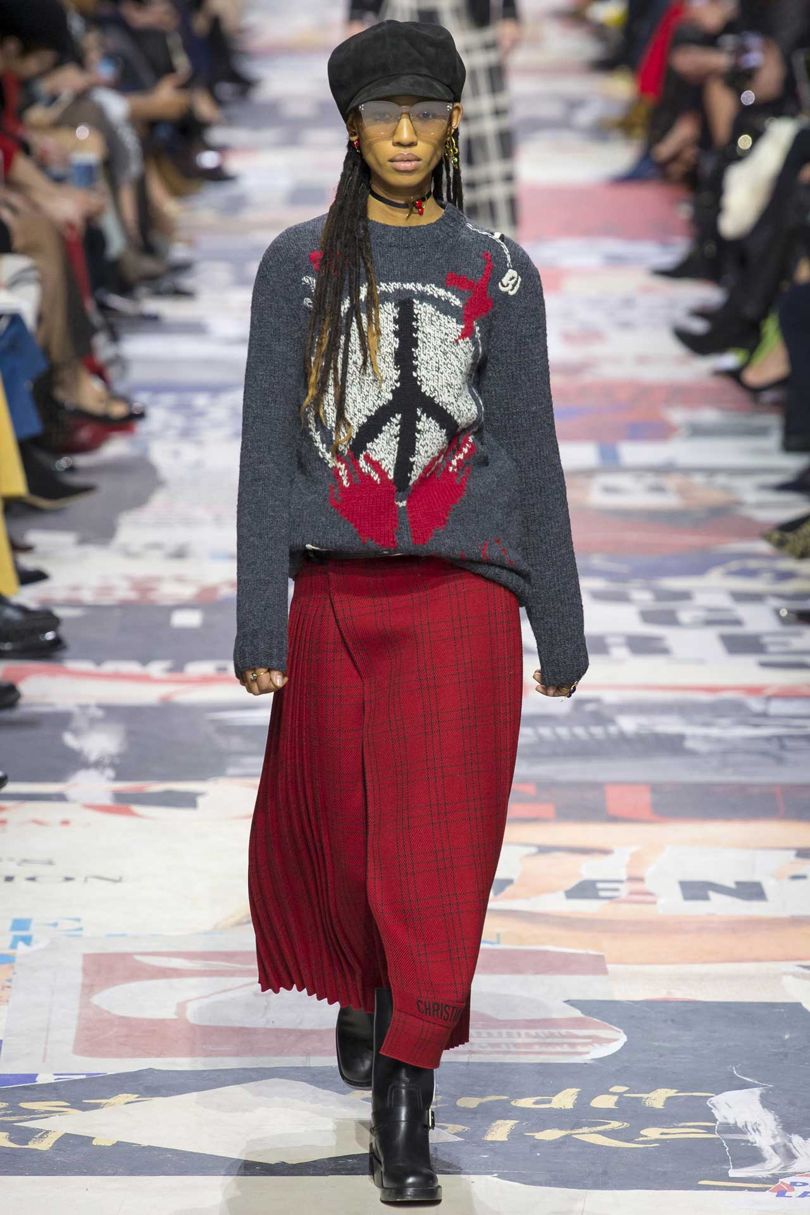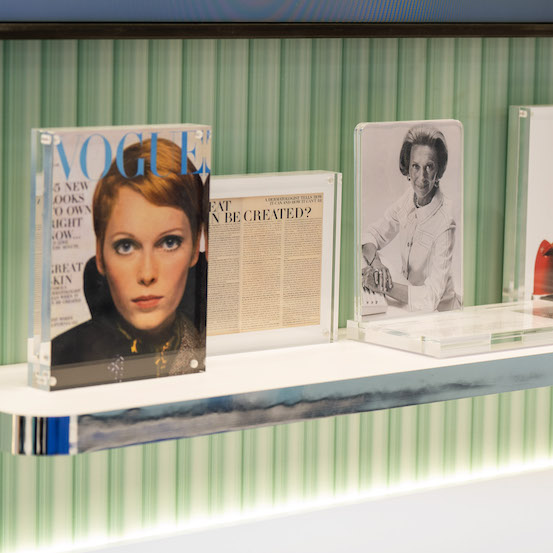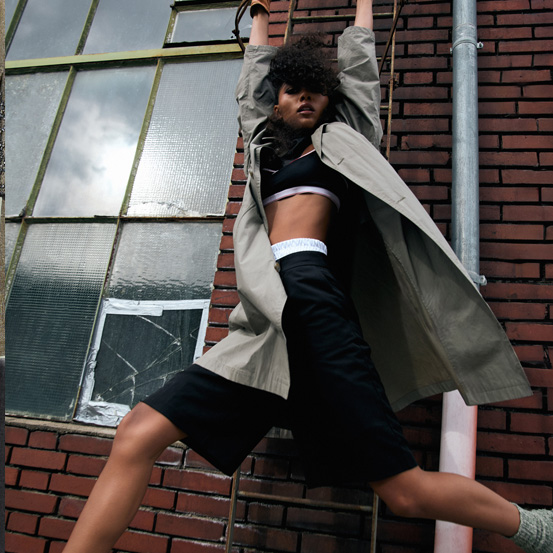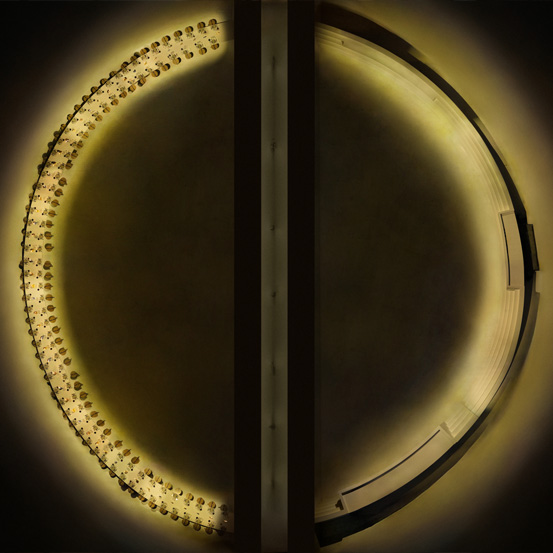Maria Grazia puts handicraft as the heart of her feminist cause
Maria Grazia puts handicraft as the heart of her feminist cause

Christian Dior Autumn/Winter 2018 ©Imaxtree
C'est Non, Non, Non et Non! announced the sweater that opened the Dior show, while the walls outside and in the temporary space were covered with semi-graffiti: magazines, all from the same year, torn, or scribbled with messages.
"Unfair to the mini skirt!" was a daub painted beside the picture of a Dior store.

Christian Dior Autumn/Winter 2018 ©Imaxtree
Maria Grazia Chiuri's show was all about 1968, the year of the "Youthquake", as the fashion editor Diana Vreeland named it, following rioting students in Paris and an explosion of unrest throughout Europe.
"The young generation changed the world, so the references we are using at the back and all around the show were an important moment in fashion," said Maria Grazia. "Couture houses either adapted or closed. It was the beginning of prêt-a-porter and the time of Miss Dior."
But for Maria Grazia, who has dedicated previous shows to the strength of women and made that her cause, the revolution 50 years ago was not just about sowing the seeds of student power, female power, black power and gay power. It was a period when there was a new belief in handicraft - and that was at the heart of the Dior Autumn/Winter 2018 show.

Christian Dior Autumn/Winter 2018 ©Imaxtree
"I'm trying to speak about feminine craftsmanship, and other works like knitwear and embroidery," she said. "Patchwork is like another kind of print. I had 60 days to research the authenticity of lace, embroidery and patchwork, paint, craftsmanship, even fake fur made from wool.''
The designer's enthusiasm was infectious - on and off the runway. As the models walked out in their tailored jackets and kilt skirts, it became clear as they moved that the bottom halves were in the lightest of chiffon; while a sweater with a "ban the bomb" sign was teamed with a skirt of heavier wool. This hard/soft idea worked well and was an introduction to craftsmanship that was sharp and tough - not the hazy, hippie-de-luxe look that flowered in Woodstock in 1969.
The show became a balance between masculine uniforms, typical of the arrival of the trouser suit in the 1960s, and decorative craftsmanship.
''I don't know that it is hippie," said the designer. "We speak about freedom, about rebellion, and there are many references. The checks come from Mr Dior's years; we made chemises that came from Marc Bohan [a later Dior designer, from 1960 to 1989]. There is even a "unisex" outfit. You can mix them together. I think luxury brands should be timeless. Some things come from the past and some from the present."

Christian Dior Autumn/Winter 2018 ©Imaxtree
With a section halfway through featuring bold, tailored coats and jackets to contrast with the colourful patchworks and embroideries, this was the most convincing show Maria Grazia has done in the female empowerment category. For Pietro Beccari, Dior's new CEO, so many easy and appealing (dare we say "ordinary"?) clothes must have been a godsend.
There is one caveat: it was Yves Saint Laurent which became the rebellious brand, raising the ire of straight-laced women, while Dior, once a shocker with its New Look skirts, was by 1968 a stable, sober house. Its clients were probably concerned about the 1968 riots rather than likely to join in.

Christian Dior Autumn/Winter 2018 ©Imaxtree
But today, with the demand for power for women, particularly in the aftermath of the Harvey Weinstein affair and the #MeToo campaign, Maria Grazia, with her grown-up daughter at her side, made a good shot with this collection for modern women.

Christian Dior Autumn/Winter 2018 ©Imaxtree
I just hope the forthright designer didn't see eager members of the audience after the show climb the battleground of torn magazines, power women and demonstration slogans - as they posed for selfies.
Most popular


Relacionados
.jpg)
Alice Trewinnard prepara-se para a GQ Night of the Year | Beauty Confessions
23 Nov 2024

.jpg)



